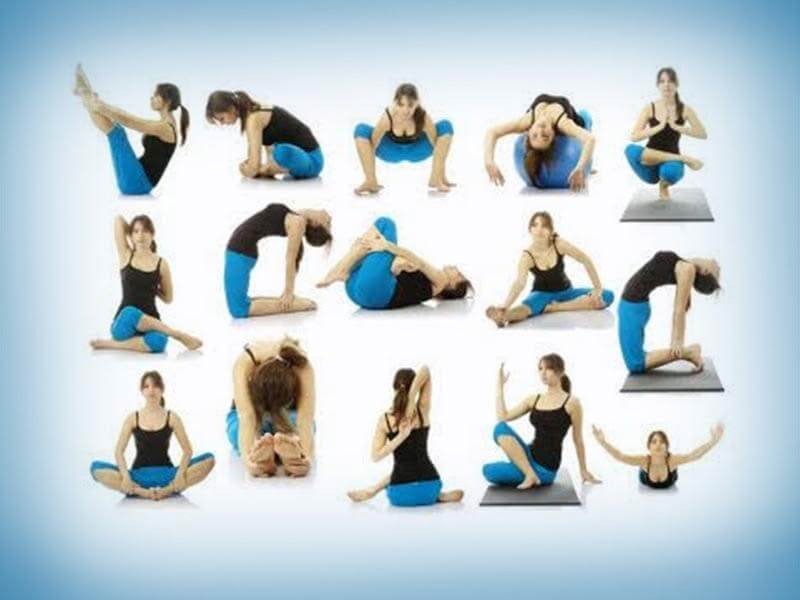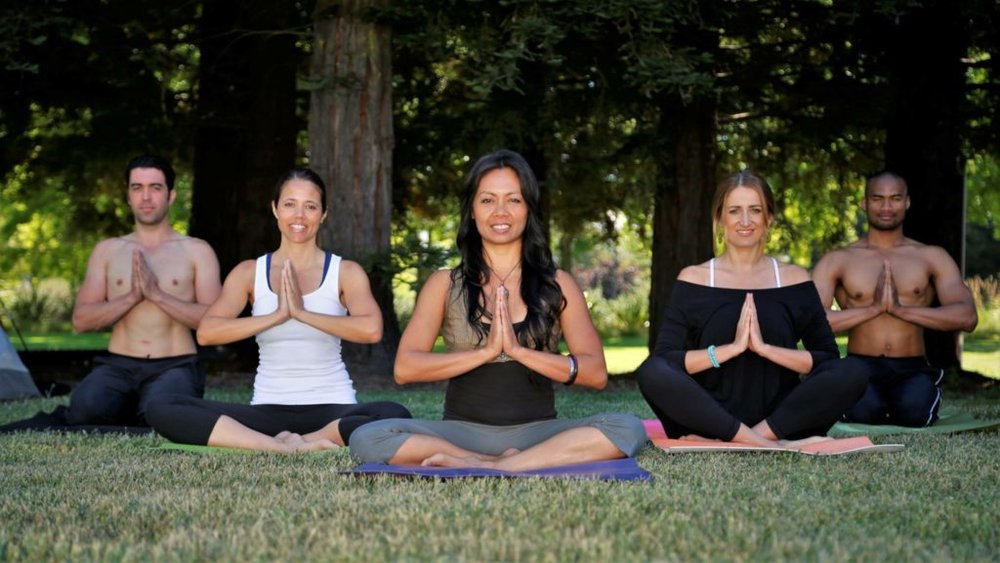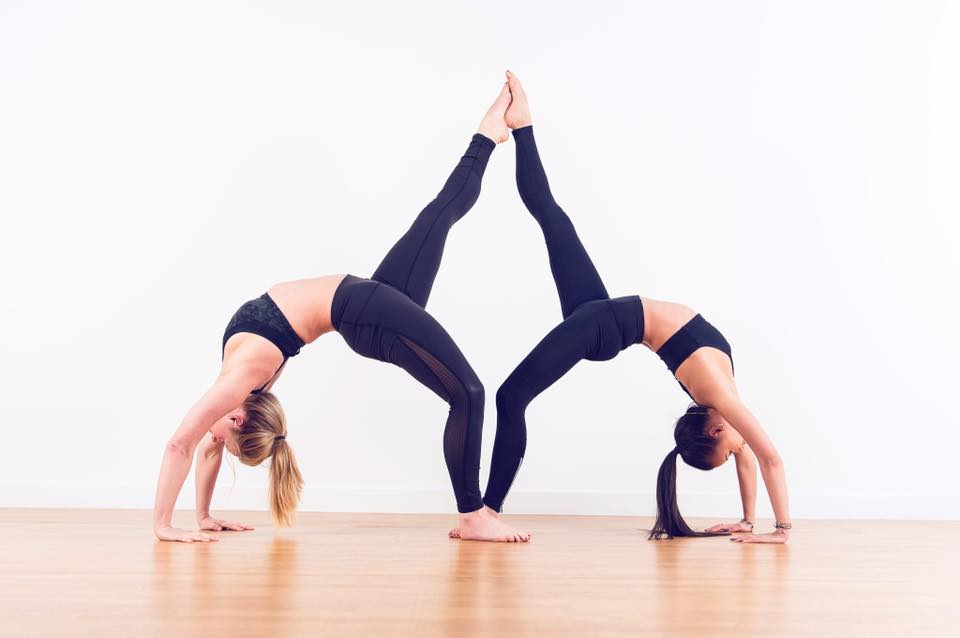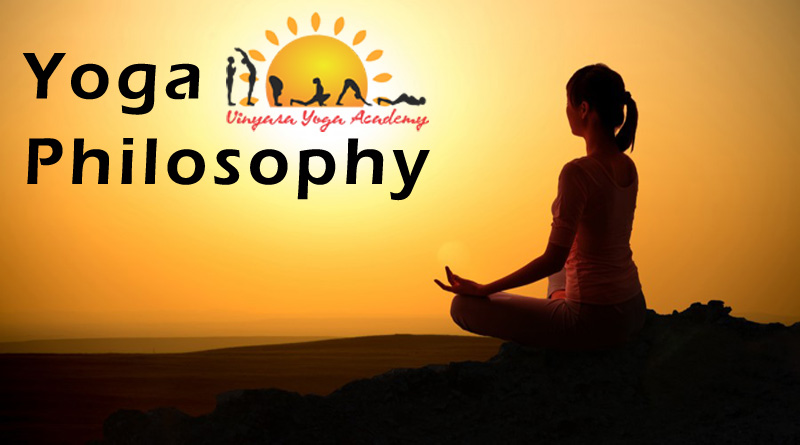
The expression “yoga” is connected to an arrangement of practices and techniques that additionally incorporate Hindu, Jain and Buddhist practices. In Hinduism, these practices incorporate Jnana Yoga, Bhakti Yoga, Laya Yoga, and Hatha Yoga.
Ashtanga Yoga
Yoga Sutras of Pantajali, which are the most established known composed arrangement about yoga, incorporate the Raja Yoga or the Ashtanga Yoga, (the eight appendages to be rehearsed to achieve Samadhi). A definitive point of the yoga practice is to acquire Samadhi or solidarity of the individual self with the Supreme Being. Patanjali states that one can accomplish this preeminent association by the disposal of the ‘vruttis’ or the diverse adjustments of the psyche. The psyche can thusly be constrained by right control and preparing of the body. The Yoga-Sutra of Patanjali involve:
Yama: Social restrictions or moral qualities for a living. They include Ahimsa (Non-brutality), Satya (honesty) Asteya (non-taking), Brahmacharya (abstinence, loyalty to one’s accomplice) and Aparigraha (non-possessiveness).
Niyama – They incorporate the individual observances of – Sauce (lucidity of the brain, discourse, and body), Santosha (satisfaction), Tapas (persistence). Svadhyaya (investigation of self, self-reflection, investigation of Vedas), and Ishvara-Pranidhana (examination of God/Supreme Being/True Self)
Asana: Literally signifies “situate”, and in Patanjali’s Sutras alludes to the situated position utilized for reflection.
Pranayama – Prana, breath, “ayama”, to limit or stop i.e., guideline of breath
Pratyahara – Withdrawal of the sense in planning to contemplation.
Dharana – Concentration
Dhyana – Meditation.
Samadhi – Liberating one’s body to accomplish bliss.
Besides, Patanjali has recognized some essential impediments that don’t permit the psyche from rehearsing yoga. He has partitioned them into 2 classes:
Antarayas (gatecrashers in the way of yoga)
Viksepasahabhuvah (existing together with mental diversion)
There are 9 Antarayas:
Vyadhi (physical ailment) – If a body is experiencing some ailment, it should be relieved and reestablished to a solid state. Malady causes the issue of the brain and makes it hard to rehearse yoga or some other type of physical control
Styana (mental sluggishness) – The human wants to harvest the products of activity with no exertion isn’t helpful for psychological well-being. Solid self-discipline should be utilized to get rid of this sickness.
Samshaya (question) – Faith is the main fix to dissipate all emerging questions.
Pramada (lack of regard) – If one is careless in regards to develop temperances, Yoga can’t be rehearsed.
Alasya (physical lethargy) – Involving in solid exercises conquers this apathy
Avirati (separation) – The mind should be withdrawn from material items to accomplish Yoga
Bhrantidarsana (false observation) – prompts self-arrogance and should be fended off.
Alabama-bhumikatva (non-accomplishment of yogic states) – Recognizing the malicious attributes as a part of our identity and banishing them would help over the long haul
Anavasthitatva (falling far from yogic states accomplished)
There are 4 Viksepasahabhuvah
Dukha – distress and enduring incurring the human personality.
Daurmanasya – frustration due to non-satisfaction of wants and desire.
Angamejayatva – fretfulness of the appendages because of mental tumult.
Shvasa and prashvasa – constrained inward breath and exhalation. Controlled breathing or equalization in breathing applies a quieting impact in the psyche.
Patanjali states that these hindrances can be expelled through contemplation and commitment to God; which will make ready for self-acknowledgment.
Vashishta Yoga:
Yoga Vashishta should have been unveiled by the Vedic sage, Vashishta to his illustrious pupil Lord Rama, who is said to be a rebirth of Lord Vishnu. Yoga Vashishta includes 32000 shlokas. In this sacred text, sage Vashishta clarifies the lessons of Vedanta in the type of stories to Lord Rama. He shows him the beguiling idea of the world, shows him the best way to accomplish insight and joy in this way demonstrating to him the way prompting the preeminent soul.
Kundalini Yoga (Laya Yoga):
This type of yoga was first presented in The Yoga-Kundalini Upanishad in the main portion of the seventeenth century. Kundalini yoga is the yoga of cognizance. Kundalini is base vitality or Shakti, which lies torpid and is curled at the base of the spine like a snake. It is the vitality of cognizance and mindfulness in any human structure. Kundalini yoga should stir the dozing Kundalini Shakti from its looped position at the spinal base through a progression of 6 chakras, and infiltrate the seventh chakra, or the crown. The motivation behind this type of yoga through the everyday routine with regards to kriyas and reflection in sadhana is said to be a reasonable innovation of human cognizance to accomplish their definitive imaginative potential. Rehearsing this Kundalini Yoga normally drives one to be freed from one’s Karma and to understand their motivation throughout everyday life (Dharma).
Nothing Yoga:
The essential hypothesis behind Nada Yoga is that the whole universe and every one of its occupants comprise, of sound vibrations or nadas (Sanskrit, ‘and’ signifies sound). ‘Nothing’ resounds to the sound of ‘Om’, which is the crude type of vitality. Nothing yoga rehearses types of activity bringing the association of the self with God, through sound or music. The N?da yoga framework partitions sound or music into two classes: inside sound,
Jnana yoga:
Jnana (shrewdness or information) is the most troublesome way to accomplish in Yoga and requires extraordinary quality of will and insightfulness. The essential objective of this type of yoga is to end up free from the beguiling universe of Maya (considerations and discernment) and to accomplish association of the internal identity (Atman) with the unity of all life (Brahman). This is accomplished by consistently rehearsing the psychological systems of self-doubting, consideration and cognizant brightening expressed in the sadhana chatushtaya (Four Pillars of Knowledge). These Four Pillars are the means of accomplishing freedom. Nonstop routine with regards to these means would develop profound knowledge, understanding and diminish enduring and disappointment throughout everyday life. The 4 stages are:
Viveka (acumen, segregation) – purposeful scholarly exertion to separate between the perpetual and the transitory and Self and not-Self
Vairagya (separation) – The mind should be withdrawn from material items to achieve Yoga
Shatsampat (six ideals) – six mental practices of smoothness, restriction, renunciation, continuance, trust, and center to balance out the brain and feelings
Mumukshutva (longing) – energetic want for freedom from torment.
It is similarly vital to rehearse lowliness and empathy on the way of self-acknowledgment.
Bhakti Yoga:
Bhakti (dedication or love) Yoga is one of the four principal ways to achieve illumination. This type of yoga tries to join the bhakta (wannabe) with the Divine. Bhakti Yoga is said to be the simplest and the most immediate technique to encounter the solidarity of brain, body, and soul. Bhakti Yoga requires just an open, cherishing heart, while Hatha Yoga requires a solid and adaptable body, Raja Yoga requires a trained and thought psyche, and Jnana Yoga requires a sharp keenness. Bhakti Yoga supplements different ways of yoga well, and it is said that jnana (learning or insight) will rise when you submerge yourself in the reverential practices of Bhakti Yoga.
Hatha yoga
Hatha (Ha-sun; the-moon) yoga alludes to adjusting the manly angles dynamic, hot, sun-and ladylike viewpoints open, cool, moon-inside us all. It makes a way toward parity and joining the contrary powers. It endeavors to achieve the association of brain and body by a progression of asanas (stances) and pranayama (breathing activities) as depicted in old Hindu writings. These practices help initiate the Kundalini vitality and cleanse the assortment of negative considerations. It is an exceptionally well-known type of Yoga in the Western world right now.
By rehearsing Hatha Yoga, we build up a parity of solidarity and adaptability physically. Furthermore, we figure out how to control our psyche by adjusting our physical endeavors and offering ourselves to the posture. Hatha yoga is a solid way to accomplish for self-change. We become familiar with the art of controlling our breath which thus enables us to control the wanderings of our psyche.
 Bring Your Best You Your No.1 Healthy Lifestyle Blog
Bring Your Best You Your No.1 Healthy Lifestyle Blog



